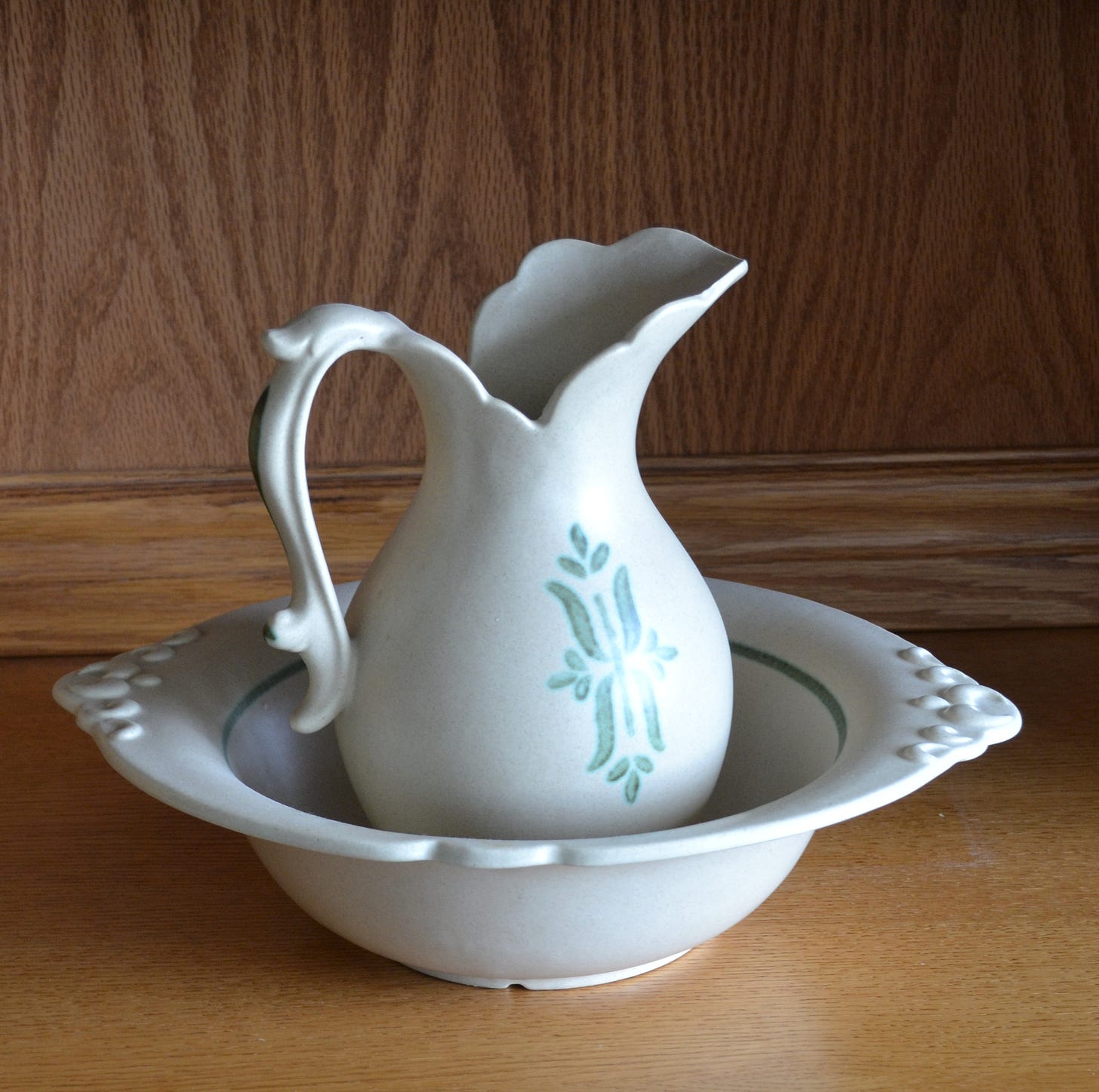The pitcher and basin on our dining room hutch look as if they come from the 1800s. Actually, we bought them new in 1975, the first year of our marriage. We didn’t really buy them, though. In that before-online-registration era, we had received two electric frying pans as wedding gifts. We traded one for the pitcher and basin. We didn’t choose it because it looked antique; we chose it because it was pretty. We liked its graceful lines and green stenciling.
A few months later we bought a half-century-old, two-story home at 719 East Rose Street in Owatonna, Minnesota, for $16,000. The day we signed the loan papers I lay awake into the early morning hours, overwhelmed by the mountain of debt we had committed ourselves to. In the ensuing months, I slowly adjusted to that mountain.
Our home’s high ceilings, wide trim boards, sheer curtains, and pull-down shades reminded me of my grandmother’s house. The house, along with the pitcher and basin called out for antique furniture. We saw a reader ad for an antique table and sideboard for $350. The ad said it was a pedestal table with claw feet. Both the table and the sideboard were solid oak, stained a walnut color. The table was just like my grandmother’s! We went, we saw, we bought. We scrunched it into our van and unloaded it. We positioned the pitcher and basin on the sideboard, and I prepared for pleasure.
It failed to materialize. Seated there, I didn’t fondly remember my grandmother. I became my grandmother gnarled, stout, and stooped. Sitting at the table, I didn’t feel pleasure. Only 28, I felt old.
We’ve made a terrible mistake, I thought. But I hesitated to tell my new husband. What if he likes the antique furniture? How will we ever resolve this issue? Marlo will think I am fickle. . . . Maybe I will like it better with time.
I didn’t.
After a month, I sent out a feeling flag. “I feel a bit old when I sit here,” I said, hesitantly.
“Really?” Marlo said, “So do I.”
“I don’t like the feeling,” I said.
“Neither do I,” he said
“Maybe I would feel differently if it were an antique in a new home,” I reasoned. “But in this house, it just makes me feel old and tired.”
“Maybe we will like it better with time,” Marlo said.
We didn’t.
Eventually, one of us felt old and tired enough to venture, “I wonder if we should sell this set and buy something new instead?”
“I wonder. . . .” The other of us responded.
Several conversations later, “I wonder” morphed into “Let’s try advertising it for sale.”
We decided to price it for a profit of $25. Both of us knew, but did not say, that $25 was poor hourly wages for our time loading, transporting, and unloading the set.
It soon sold, and we replaced it with a new, distressed-pine table and hutch. We added chairs to match. Over the decades, the pine got more distressed with multiple dings, scratches, and gouges from three growing boys. Once the nest was empty, we replaced the dark pine with a light oak set.
Nearly 50 years have passed, and we have acquired only two tiny antiques—a coffee grinder and a clawed-feet piano stool. At a half-century of age, perhaps the pitcher and basin can now be considered antique as well.
But over the decades we never again felt a yen for an antique furniture. The pitcher and basin sit on the newish oak hutch.
These days we don’t feel old; we are old. But we still don’t want an antique table and sideboard shouting that fact at us every day.
Adapted from Creative Aging by Carol Van Klompenburg, published 2023, available from Amazon and for Pella-area residents directly from Carol. Carol has an MA in theater arts and is available for reading performances of her writing on aging, moments in her gardens, and other topics.




